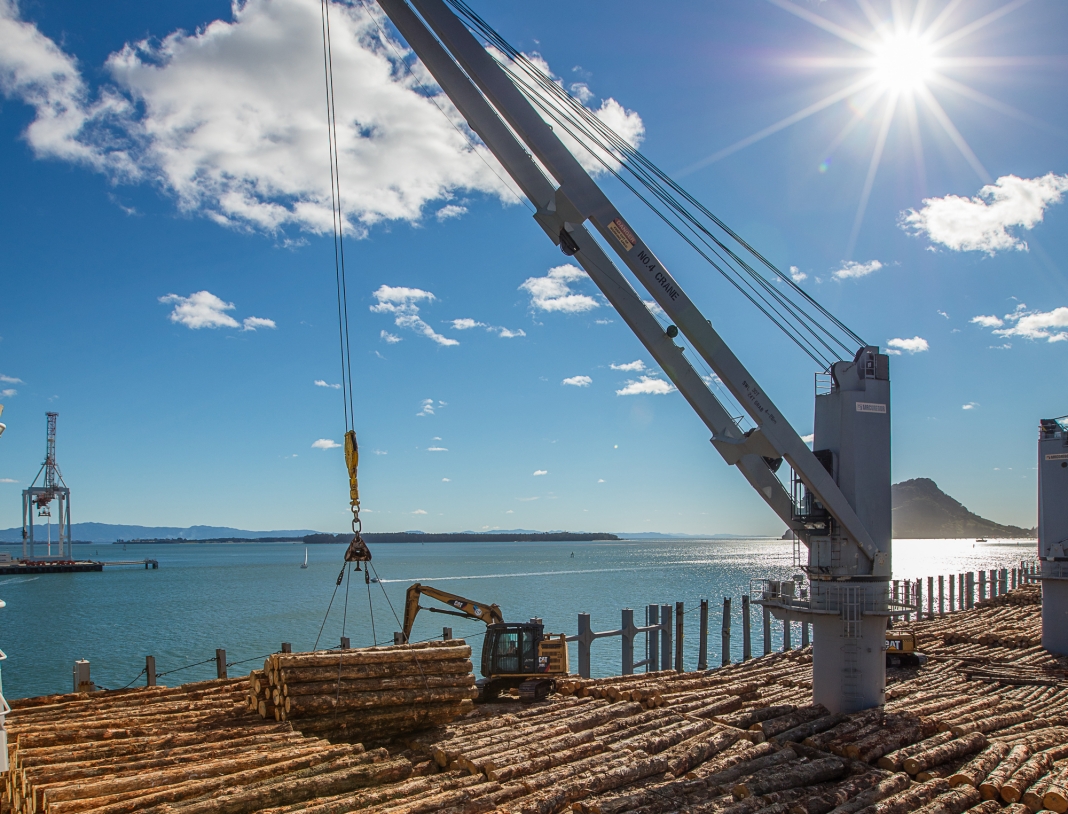Tomorrow’s growth in today’s plans at port
While covid may have delayed shipping schedules it has not slowed down Port of Tauranga’s continued investment; That investment aims to make Tauranga the most efficient port facility in Australasia.
In the decade to 2016, Port of Tauranga spent $350 million gearing up for the arrival of larger container ships, including dredging, a wharf extension and new ship-to-shore cranes.
October 4, 2016 saw the arrival of the first of those big ships, the 347m long Aotea Maersk.
Capable of carrying almost 10,000 TEUs, the ship’s arrival heralded a new era that demanded efficient, high-capacity port assets to match volume.
Port executives are working on the asset’s next steps for even greater efficiency gains.
“Terminal efficiency has been a big thing for us over the years, and this includes a new 10-lane container truck exchange we commissioned in early 2021 which has sped up cargo deliveries and collections,” says CEO Leonard Sampson.
Truck turnaround times have now been minimised, and deliveries are encouraged outside of peak periods to smooth traffic flows. This will be enhanced in coming years, thanks to the Port’s proposed automated straddle crane (ASC) project.
The project will enable the port to intensify storage capacity within the existing footprint, improve throughput, improve safety, reduce fuel consumption and reduce carbon emissions.
Together with the port’s planned berth extension, automation will allow the port to handle double the existing container volume. ASCs are already being used by the world’s leading ports including Singapore, Brisbane, Melbourne, Antwerp, and Rotterdam.
“It is now clear that even without the additional berth capacity some level of automation will be required to expand storage capacity and improve throughput,” says Leonard Sampson.
The automated stacking cranes are 100% electric and will produce 75% fewer carbon emissions than a comparable traditional diesel straddle carrier operation.
No investment in port side capacity can be done without looking beyond the immediate port area to the region’s roading and rail infrastructure.
Port of Tauranga has aimed to minimise its impact on local roading by promoting rail to customers as an efficient alternative, with ongoing investment in infrastructure vital to ensure there is resilience and capacity to accommodate growth.
Port of Tauranga has been heavily engaged in infrastructure planning, through the Waikato-Bay of Plenty Freight Action Plan.
Alongside other major stakeholders including KiwiRail, Tainui Group Holdings, Fonterra and Waka Kotahi, the plan has recognised the need to increase the region’s freight network capacity, particularly links to Auckland and removing bottlenecks to freight movements around the region.
“The report has predicted significant freight growth of between 45-65% between 2020 and 2030,” says Leonard Sampson.
Related: Hand in hand with valued community


















